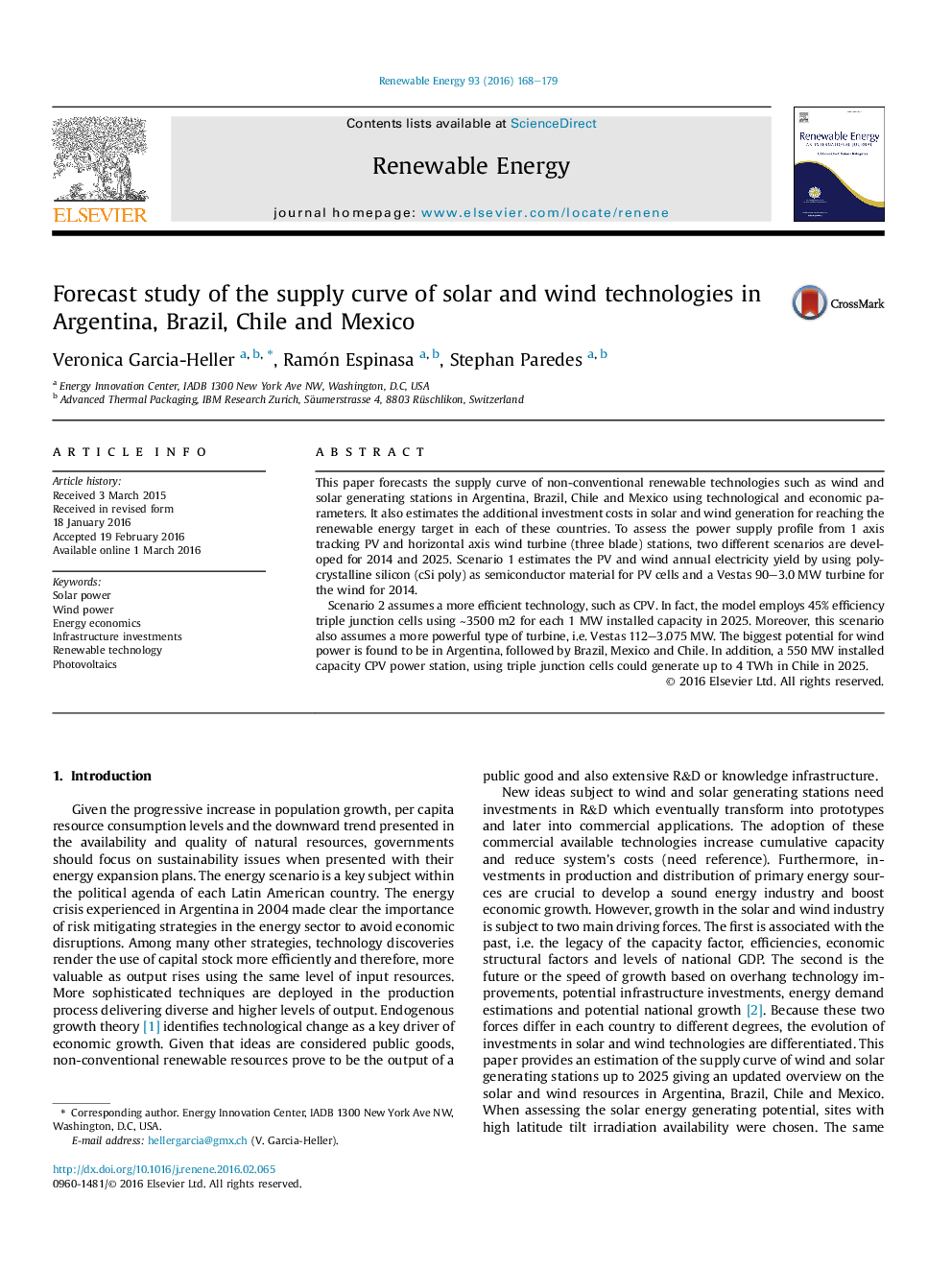| Article ID | Journal | Published Year | Pages | File Type |
|---|---|---|---|---|
| 299758 | Renewable Energy | 2016 | 12 Pages |
•Chile would require 4 solar generating plants by 2025 to cover the renewable energy target by deploying only solar stations.•Brazil would require 4 wind farms, representing 0.40% of GDP assuming the wind stations are built in 2025.•Mexico would require one wind farm and USD 4.56 billion investment equal to 0.29% of Mexico's GDP in 2025.
This paper forecasts the supply curve of non-conventional renewable technologies such as wind and solar generating stations in Argentina, Brazil, Chile and Mexico using technological and economic parameters. It also estimates the additional investment costs in solar and wind generation for reaching the renewable energy target in each of these countries. To assess the power supply profile from 1 axis tracking PV and horizontal axis wind turbine (three blade) stations, two different scenarios are developed for 2014 and 2025. Scenario 1 estimates the PV and wind annual electricity yield by using polycrystalline silicon (cSi poly) as semiconductor material for PV cells and a Vestas 90–3.0 MW turbine for the wind for 2014.Scenario 2 assumes a more efficient technology, such as CPV. In fact, the model employs 45% efficiency triple junction cells using ∼3500 m2 for each 1 MW installed capacity in 2025. Moreover, this scenario also assumes a more powerful type of turbine, i.e. Vestas 112–3.075 MW. The biggest potential for wind power is found to be in Argentina, followed by Brazil, Mexico and Chile. In addition, a 550 MW installed capacity CPV power station, using triple junction cells could generate up to 4 TWh in Chile in 2025.
